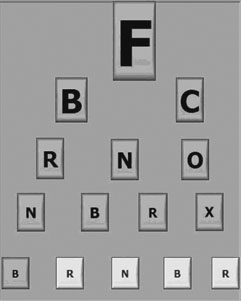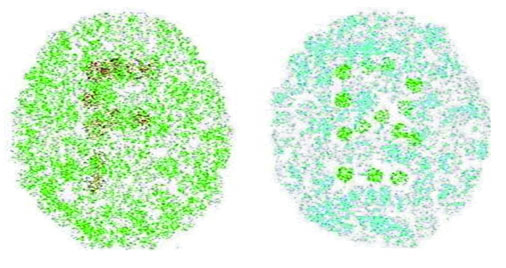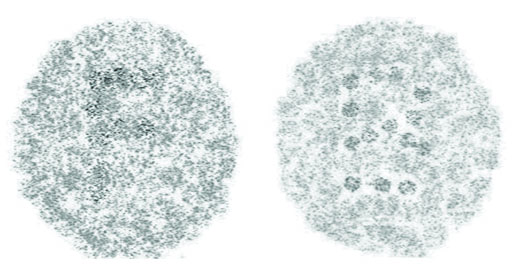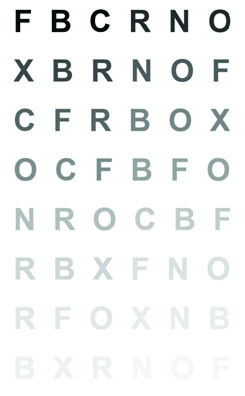Design of Low Cost Automated Vision Screening Test for Awarding Driving License
Ganesan Kaliyaperumal1, D Shalini2
1 Director, TIFAC CORE in Automotive Infotronics, VIT University, Vellore, Tamil Nadu, India.
2 Senior Development Engineer, TIFAC CORE in Automotive Infotronics, VIT University, Vellore, Tamil Nadu, India.
NAME, ADDRESS, E-MAIL ID OF THE CORRESPONDING AUTHOR: Dr. Ganesan Kaliyaperumal, Director, TIFAC CORE in Automotive Infotronics Technology Tower, TT701, VIT University, Vellore - 632014, Tamil Nadu, India.
E-mail: kganesan@vit.ac.in
Color blindness,Contrast sensitivity test,Motor vehicle act,Visual acuity,Vision test
Dear Editor,
In many countries, the driving license is issued only for people who are 18-year-old. For this, one has to clear the written test, vision test and driving test. The driver should follow certain vision standards to drive safely. The major reasons for road accidents are over speeding, drink and drive, inexperienced fatigue driver [1]. There are several traffic signs to be followed strictly for safer driving. Most people over the age of 45 have the difficulty in near vision. A 47% of people have visual disorders like distance vision and colour vision problem [2]. These people react indifferently for the traffic light and warning light signals. To overcome these issues, we propose a visual examination test consisting of visual acuity, colour blindness and contrast sensitivity test. It can be referred by the driving license issuing authorities.
Visual acuity Test
Visual acuity test is done using standard Snellen chart approach as shown in [Table/Fig-1]. We use the sensing module (Webcam) to guide and position the driver to be examined at 20 feet distance. Once if the desired distance is accomplished, he will be alerted by an audio assistance (beep signal) through the speaker system and the respective Snellen chart will be displayed for examination [3].
Design of Snellen letter chart;

Colour Blindness Test
Colour blindness test is done using Ishihara plate [4] design algorithm as shown in [Table/Fig-2]. Here the person can sit approximately at 75 cm from the chart and read the coloured characters via microphone. In our work we have designed automated vanishing plates with the coloured characters engraved over the multiple coloured dots to diagnose whether the person is suffering from colour vision defect or not and also indicate the colours they are blind too. The grey scale version of Ishihara plate is shown in [Table/Fig-3] below.
Typical Ishihara colour vision plates;

Grey scale version of Ishihara plates;

Contrast Sensitivity Test
Contrast sensitivity test is done using Pelli Robson contrast sensitivity test chart. It determines, how the eyes of a driver to be certified can recognize objects under various lighting conditions. While driving at low light conditions, the contrast level between the image and background will differ and some people feel very difficult to detect the small changes in shade known as low contrast sensitivity [5]. This may also result due to cataract, glaucoma and diabetic retinopathy. Good contrast sensitivity is required to drive safely at night times.
Pelli Robson contrast sensitivity test chart (used in clinical practice) as shown in [Table/Fig-4] has wide range of contrast and it can evaluate the contrast level from 100% to 0.56%. Pelli Robson chart consist of triplets of three letters whose contrast level start decreasing from left to right and from top to bottom. Each line has a unique score. A score of 2.0 represent normal level and the score less than 1.5 indicates abnormal visual level.
Pelli Robson contrast chart. (Images left to right)

We have extended our previous work [3] and proposed few low cost automated vision screening tests that are useful for driving license issuing authorities. These tests can be done instantaneously using trained personnel.
[1]. Adewale Olumide S, Ogundele Oloruntoba S, Otasowie I, An analytical framework for vision testing in driving license allocation in Nigeria International Journal of Computer Applications 2014 97(4):34-38. [Google Scholar]
[2]. Latham K, Katsou MF, Rae S, Advising patients on visual fitness to drive: Implications of revised DVLA regulations British Journal of Ophthalmology 2015 99(4):545-48. [Google Scholar]
[3]. Ganesan K, Shalini D, Design of customizable automated low cost eye testing system J Clin Diagn Res 2014 8(3):85-87. [Google Scholar]
[4]. Erdogan H, Ozdemir L, Arslan S, Cetin l, Ozec AV, Cetinkaya S, Prevalence of refraction errors and colour blindness in heavy vehicle drivers International Journal of Ophthalmology 2011 4(3):319-22. [Google Scholar]
[5]. Richman J, Spaeth GL, Wirostko B, Contrast sensitivity basics and a critique of currently available tests Journal of Cataract & Refractive Surgery 2013 39(7):1100-06. [Google Scholar]